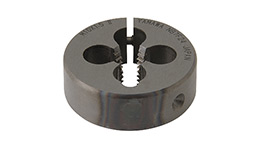
Dec . 25, 2024 09:46
Back to list
cyclone separator
Cyclone Separator An Efficient Solution for Particle Separation
Cyclone separators are widely used industrial devices that exploit the principles of centrifugal force to separate particulate matter from gases or liquids. They are known for their efficiency, reliability, and minimal maintenance requirements, making them an integral component in various industries, including pharmaceuticals, food processing, and environmental engineering.
At its core, a cyclone separator is a conical device with an inlet through which the mixture of gas and particles enters. The design encourages the fluid to swirl around the central axis of the cone, creating a spiral motion. This rotation generates a centrifugal force that causes the heavier particles to move outward and downward while the lighter components are drawn upward. Eventually, the separated particles are collected at the bottom of the cyclone, while the purified gas or liquid exits through a designated outlet.
One of the primary advantages of using a cyclone separator is its ability to handle large volumes of material and efficiently separate particles of varying sizes. Unlike traditional filtration systems which often clog with larger particulate matter, cyclone separators can accommodate much coarser particles without any degradation in performance. This characteristic makes them particularly useful in industries that deal with a high influx of solid contaminants.
The efficiency of a cyclone separator is influenced by several factors, including the particle size distribution, operating pressure, and the geometry of the separator itself. For instance, shorter cyclones are generally more effective at collecting larger particles, while taller ones excel at removing finer particulates. Moreover, adjusting inlet velocity can significantly impact separation performance, allowing operators to optimize the system for specific applications.
cyclone separator

Cyclone separators also provide a relatively low-cost solution compared to other separation technologies. They do not require filter media or extensive energy inputs, which can lead to significant operational cost savings over time. Furthermore, their straightforward design often translates to easier maintenance, as there are fewer moving parts that can wear down or malfunction.
Another noteworthy aspect of cyclone separators is their environmental benefit. By effectively removing contaminants from gas streams, they help industries comply with increasingly stringent air quality regulations. This not only mitigates environmental impact but can also enhance workplace safety by reducing worker exposure to hazardous particulates.
Despite their many advantages, cyclone separators have some limitations. They are not particularly effective for capturing very fine particles, usually those smaller than 5 microns, as these can remain entrained in the gas or liquid stream. For applications requiring the removal of such fine particulates, additional filtration technologies may be necessary, often in tandem with a cyclone separator to improve overall system efficiency.
In conclusion, cyclone separators stand out as a versatile and effective solution for the separation of particulates from gaseous or liquid streams. Their operation is based on fundamental physical principles, ensuring a high level of efficiency while remaining cost-effective and environmentally friendly. While they may not be suitable for applications dealing exclusively with ultra-fine particulates, their advantages make them a preferred choice in many industrial settings. As industries continue to prioritize sustainability and efficiency, the role of cyclone separators is likely to expand, highlighting their importance in modern process engineering.
Latest news
-
Safety Valve Spring-Loaded Design Overpressure ProtectionNewsJul.25,2025
-
Precision Voltage Regulator AC5 Accuracy Grade PerformanceNewsJul.25,2025
-
Natural Gas Pressure Regulating Skid Industrial Pipeline ApplicationsNewsJul.25,2025
-
Natural Gas Filter Stainless Steel Mesh Element DesignNewsJul.25,2025
-
Gas Pressure Regulator Valve Direct-Acting Spring-Loaded DesignNewsJul.25,2025
-
Decompression Equipment Multi-Stage Heat Exchange System DesignNewsJul.25,2025

